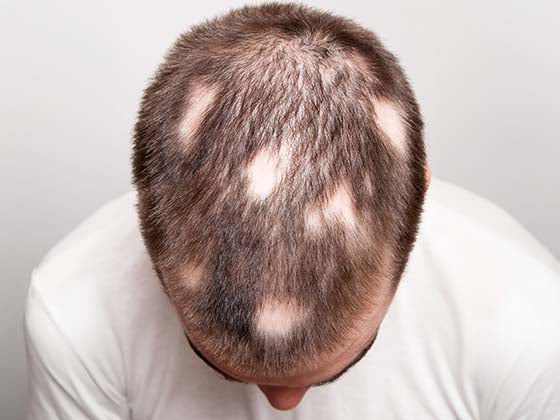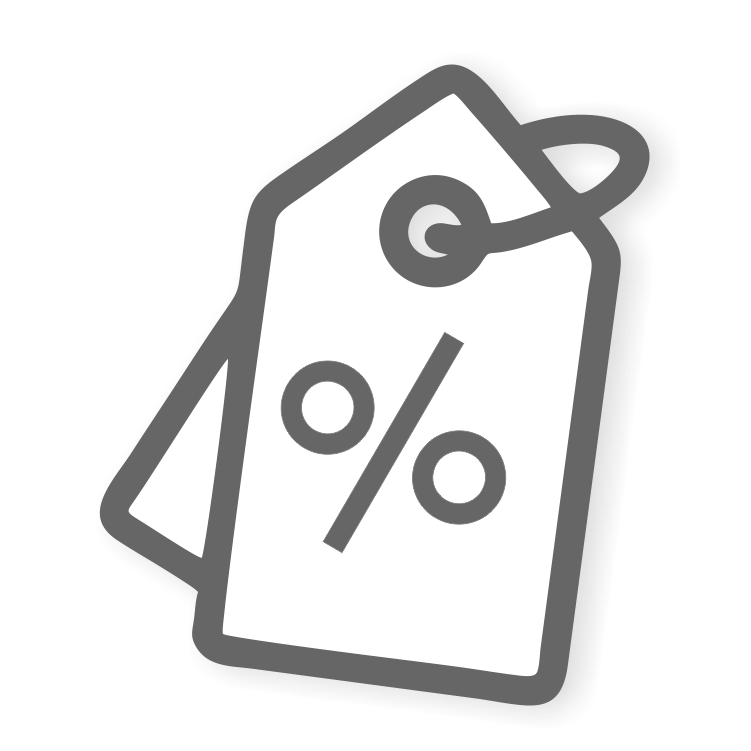Topical minoxidil is one of the most commonly used treatments to promote hair growth. Minoxidil foam and liquid are popular among hair loss patients since they are appropriate for both men and women and have been proven to treat a variety of alopecia. In this blog, we'll talk about the benefits and drawbacks of utilizing minoxidil foam over liquid.
Understanding Minoxidil: How It Works for Hair Growth

Minoxidil is a well-known, successful hair loss treatment that stimulates hair follicles, improves blood circulation to the scalp, and extends the growth phase of the hair cycle. While it may not be suitable for everyone, it provides a safe and easily available option for many people suffering from hair thinning or baldness. If you're thinking about utilizing minoxidil, you should be prepared to wait many months for obvious effects. Regular application, consistency, and reasonable expectations are essential for attaining the optimum results.
The Science Behind Minoxidil: Stimulating Hair Follicles

Minoxidil is a scientifically proven hair loss treatment that works by increasing blood circulation to the scalp, stimulating hair follicles, and lengthening the growth phase of hair. It can stimulate miniaturized and inactive follicles, resulting in thicker, healthier hair. While the specific mechanism is unknown, its ability to increase follicle size, stimulate new hair growth, and prolong the anagen phase makes it an effective treatment for androgenic alopecia. Minoxidil is not a permanent solution for hair loss and must be used consistently to maintain results, although it has proven to be successful for many users.
Minoxidil and Hair Growth Cycle: What to Expect

When using minoxidil for hair growth, expect to see initial results, such as noticeable hair regrowth, after about 2-4 months of consistent application, with the most significant improvements appearing within 4-6 months; however, the first few weeks may see increased hair shedding, which is considered normal as the medication pushes more hair follicles into the active growth phase at once.
Key points regarding minoxidil and the hair growth cycle:
-
Initial shedding: When starting minoxidil, a brief increase in hair loss may occur within the first few weeks, which is usually a good sign that the medicine is working by shifting hair follicles into the growth phase.
-
Anagen phase stimulation: Minoxidil stimulates the anagen (growth) phase of the hair cycle, resulting in longer hair growth and potentially thicker strands.
-
Time to see results: Visible hair regrowth usually appears after 2-4 months of constant use, with the most evident changes occurring between 4-6 months.
-
Maintenance is required: To maintain hair regrowth, minoxidil must be used on a regular basis, as discontinuing therapy might result in hair loss within a few months.
Common Misconceptions About Minoxidil

The most common misconceptions about minoxidil, to help you make the best decision for your hair regrowth journey.
-
Myth: Minoxidil only works for male pattern baldness.
-
Reality: Although minoxidil is most frequently linked with male pattern baldness, it is also allowed for usage in women with female pattern hair loss. In reality, the 2% dosage of minoxidil is frequently advised for women with thinning hair or hair loss, while the 5% concentration is occasionally prescribed for women under the supervision of a doctor. Clinical trials have shown that minoxidil is effective in women, albeit the outcomes may vary by individual.
-
Myth: Minoxidil is a permanent treatment for hair loss, and once you stop using it, your hair will stay thick and healthy indefinitely.
-
Reality: Minoxidil is not a permanent solution for hair loss. It works as long as you use it consistently. If you stop using minoxidil, any hair regrowth you've accomplished is usually lost, and the hair loss process resumes. Minoxidil-stimulated hair growth is dependent on regular administration; once you stop using it, the effects will reverse, and shedding will most likely revert to normal. It's a long-term treatment, not a one-time fix.
-
Myth: Minoxidil should produce immediate benefits.
-
Reality: Minoxidil takes time to produce apparent results. It is usual for users to suffer initial shedding (old hair falling out to create place for new hair) in the first few weeks of use. Visible benefits can take 2 to 4 months, with significant changes often occurring between 6 and 12 months. Patience and consistency are essential, and using minoxidil for only a few weeks may not provide sufficient time to reap the advantages.
-
Myth: Minoxidil will treat all types of hair loss and result in significant regrowth.
-
Reality: Although minoxidil works for many people, it does not work for everyone. The effectiveness of minoxidil is influenced by genetic variables, the degree of hair loss, and the reason for the hair loss. It is most useful for persons experiencing mild to moderate hair loss and early balding. Those with significant hair loss or advanced baldness may not have the same level of improvement. The response to minoxidil varies by individual, and some people may have little to no results.
-
Myth: Minoxidil and Rogaine are separate products.
-
Reality: Rogaine is a brand name for a product that contains the active component minoxidil. So, when you use Rogaine, you're basically utilizing minoxidil. Rogaine is one of the most popular over-the-counter minoxidil formulations, but other brands use the same active ingredient in both foam and liquid forms. The only difference is the brand name and potentially the price, but the active component remains the same.
Minoxidil Foam vs Liquid: Key Differences Explained

Minoxidil is a popular hair loss therapy that comes in two varieties: foam and liquid. Both choices contain the same active ingredient, minoxidil, but the application, absorption, and user experience may differ. Here's a breakdown of the main differences between minoxidil foam and liquid to help you decide which one is best for your requirements.
-
Application process: Minoxidil liquid comes with a dropper for simple application. Measure out 1 mL of the solution and apply it immediately to the affected areas of the scalp. The liquid must be gently rubbed into the scalp to ensure even distribution. It can be a little untidy because the liquid can drip or spill if not handled properly. In contrast, minoxidil foam formulation is distributed as a mousse-like product that is often easier to apply and less messy. You apply the foam directly to the scalp with your fingertips, which is typically considered more exact and controlled. The foam absorbs fast into the scalp and does not drip, making it a better choice for individuals on the go.
-
Absorption and drying time: The minoxidil formulation takes longer to dry than the foam. To prevent the liquid from being wiped away, you should wait 2 to 4 hours after applying it to your scalp before touching it or applying any other products. Minoxidil foam, on the other hand, absorbs quickly into the scalp, typically within 5 to 10 minutes. Because it does not run or drip, it is generally regarded as more convenient for persons who need to apply the product quickly and move on with their day.
-
Potential for scalp irritation: When using the liquid version, some people report scalp irritation such as itching, dryness, or flaking. This is because the liquid frequently contains propylene glycol, a common preservative and solvent. This component may cause discomfort to sensitive scalps. Minoxidil foam, on the other hand, does not often contain propylene glycol, making it a better option for persons with sensitive skin or who have been irritated by the liquid form. The foam may be kinder on the scalp, and because it dries fast, it may lessen the risk of scalp buildup or dryness.
-
Ease of use: Applying the Minoxidil liquid might be time-consuming because it needs careful use of the dropper and rubbing the solution into the scalp. For those with long hair, it may be more difficult to apply directly to the scalp without getting product on their hair. The liquid might make the scalp feel damp for an extended period of time. Minoxidil Foam, on the other hand, is often easier to apply, particularly for persons with shorter hair or who struggle to split their hair to access thinning regions. The foam is less prone to run or flow down the sides of your face and neck. It's an excellent choice for individuals who want to administer the treatment fast and get on with their day.
-
Sensitivity and adaptability to various hair types: People with thicker or longer hair frequently prefer the liquid form since it allows them to apply the solution more directly to the scalp. People with sensitive skin or a dry scalp may find it more difficult to tolerate because of the chemicals, such as propylene glycol. Minoxidil foam, on the other hand, is ideal for people who have sensitive scalps or dry hair because it causes less irritation. People with short hair enjoy it since it is easier to apply and absorbs rapidly. People with longer or thicker hair may have difficulty applying the foam fully to the scalp because it does not penetrate as deeply as the liquid.
-
Cost and availability: Minoxidil in liquid form is typically less expensive than in foam form, giving it an economical option for people looking to treat hair loss. It is commonly available in most pharmacies and online. However, because of its more handy and user-friendly nature, minoxidil foam is typically more expensive than the liquid version. Despite its higher price, the foam may be regarded as worthwhile by those looking for quicker application and fewer adverse effects.
Composition & Absorption Rate: What Sets Them Apart

Minoxidil foam and liquid are both effective hair loss treatments, but their compositions and absorption rates can help you decide which is best for you.
-
Choose minoxidil liquid: You need to treat a greater area of the scalp or target specific areas. You don't mind waiting longer for it to dry and are fine with a slightly messy application. You choose a formulation with slightly deeper penetration for more severe cases of hair loss.
-
Choose minoxidil foam: You have sensitive skin or are prone to irritation, as the foam is milder and causes fewer adverse effects. You require a speedier, cleaner application that absorbs and dries quickly. You have mild to moderate hair loss and want a more convenient and comfortable experience.
The decision comes down to your particular preferences for convenience, comfort, and unique hair loss requirements. Both kinds have been shown to help with hair regrowth, so choose the one that best suits your lifestyle and scalp sensitivity.
Application Ease: Which One Fits Your Routine?

Both alternatives can be extremely helpful for hair regrowth; however, the foam is more suited to a quick and handy regimen, whereas the liquid is excellent for individuals who prefer precision and targeted application. Your decision will be based on whatever factors—speed, mess, or precision—are more important to your daily schedule.
Side Effects & Scalp Sensitivity: Choosing Wisely

Your choice should be based on how sensitive your scalp is and whether you care more about the product's rapidity of application or its tenderness. Both alternatives can be extremely effective, but foam is typically a better choice for persons with more sensitive skin or those looking for a more pleasant and convenient solution.
Which Minoxidil Type is Best for You? A Personalized Approach

Minoxidil foam and minoxidil liquid are both effective at stimulating hair growth, but the best option depends on your specific needs and preferences.
-
Choose Minoxidil Liquid if you require precise application for greater areas of thinning hair, are willing to tolerate a lengthy application technique, or are looking for a less expensive choice.
-
Minoxidil Foam is recommended if you have a sensitive scalp, desire a speedier, cleaner application, or live a hectic lifestyle that necessitates a quick-drying solution.
Minoxidil for Oily vs Dry Scalp: Finding the Right Match

When contemplating minoxidil for hair restoration, one of the most crucial aspects to consider is your scalp type. An oily or dry scalp can influence how well a product works, how it feels, and whether it causes irritation or buildup. Understanding how minoxidil interacts with different scalp types will allow you to make an informed decision about which formulation—foam or liquid—is best for you. Here is how to select minoxidil based on your scalp condition.
-
Oily scalp: Excess oil on the scalp can make it difficult to absorb minoxidil. Here's everything you need to know:
-
Excess oily scalp can form a barrier, making it difficult for minoxidil to be absorbed into the hair follicles. This means that if your scalp is too oily, the product may not perform as well.
-
Minoxidil, especially in liquid form, can combine with natural oils and accumulate on the scalp. This may result in oily residue, plugged pores, and irritation, particularly when used with other hair products such as gels or hair oils.
-
If oil buildup keeps minoxidil on the surface, it may increase the probability of scalp irritation, such as itching or redness.
-
Dry scalp: On the other hand, using minoxidil can cause problems with a dry scalp. A lack of natural oils can cause irritation or flakiness, particularly when using an alcohol-based formulation.
-
The alcohol in minoxidil liquid can be drying, causing problems on a dry scalp. This may cause flaky skin, irritation, or even redness.
-
A dry scalp is more sensitive to external agents, making minoxidil more likely to cause discomfort.
-
If your scalp is extremely dry, applying minoxidil may be irritating because you experience tightness or soreness afterward.
Minoxidil for Men vs Women: Does It Matter?

Minoxidil for men:
-
The majority of men's minoxidil formulations are available in 5% strength, which is thought to be the most effective concentration for treating male hair loss. Men typically develop pattern baldness (androgenetic alopecia) that begins in the crown or temples; thus, the 5% concentration is ideal for these areas.
-
Men tend to have more advanced stages of hair loss at a younger age, which is why the 5% concentration is commonly prescribed. It delivers a greater dosage, which aids in hair regrowth in regions where the hairline is retreating or thinning.
Minoxidil for women:
-
Women's minoxidil is frequently offered in 2% strength, which is regarded as safer for the female scalp. While the 5% solution is effective, it can cause additional negative effects for women, such as scalp irritation, unwanted hair growth, or excessive dryness. Women are more prone to develop diffuse thinning (thinning of the scalp) than receding hairlines; therefore, a lower dose is usually sufficient.
-
The 2% concentration is usually suggested for women to reduce the risk of adverse effects. Some doctors may still prescribe the 5% solution for women with more severe hair loss, although constant monitoring is required.
Minoxidil Effectiveness Based on Hair Type & Thickness

Minoxidil can be used on a variety of hair kinds and thicknesses, but understanding how your hair properties interact with the treatment might help you obtain better results:
-
Minoxidil works well on thin hair, producing faster results.
-
Minoxidil may take longer to show results on thick hair, but it can still stimulate regrowth.
-
Minoxidil may be more difficult to apply evenly to curly or coarse hair, but it is still effective.
-
Minoxidil works well on straight hair because of its ease of penetration and even coverage.
Finally, the effectiveness of minoxidil is determined not just by hair type or thickness but also by consistency, application technique, and scalp health. For maximum results, select the formulation (liquid or foam) that best suits your hair type and follow the prescribed usage.
Final Verdict: Making the Right Choice for Your Hair Regrowth Journey

Minoxidil remains one of the most successful hair restoration therapies, particularly for people experiencing early hair loss. Consider your hair type, scalp health, and any potential side effects before deciding on a foam or liquid product. Minoxidil can be an effective tool in your hair restoration journey if used consistently, patiently, and with a focus on scalp health. Always consult a dermatologist to ensure that it is the best option for your unique needs and that your therapy is tailored to get the greatest outcomes.
















